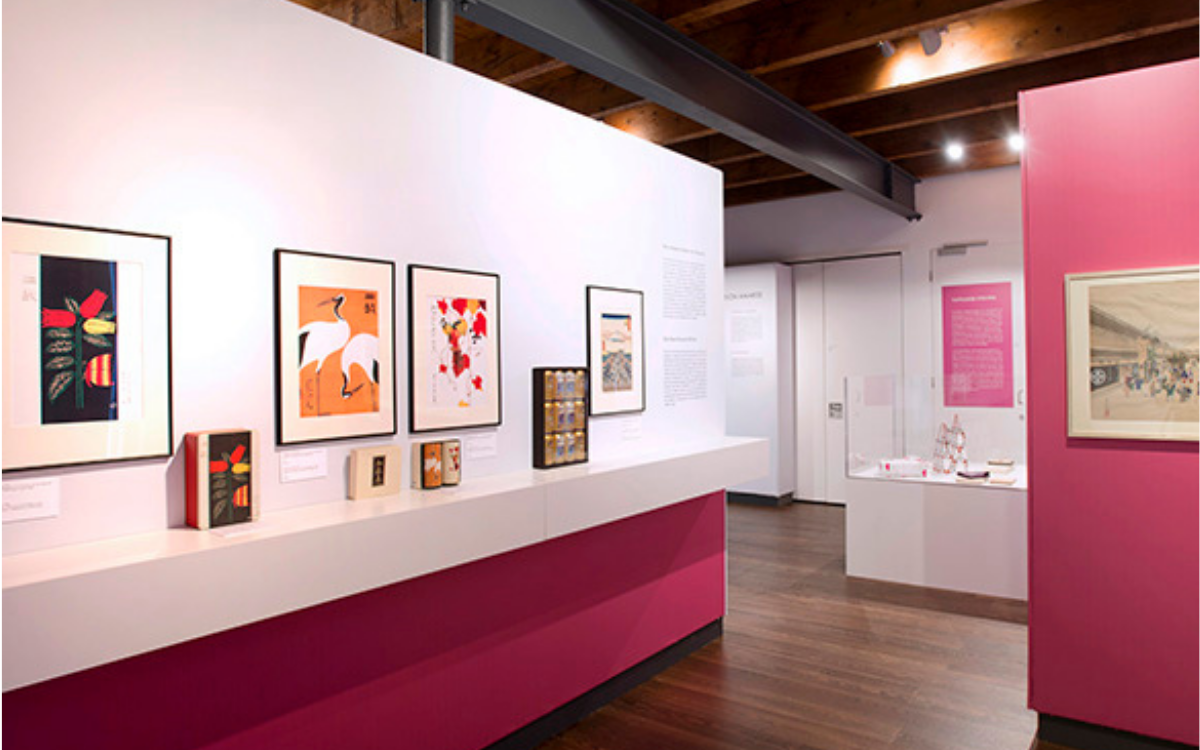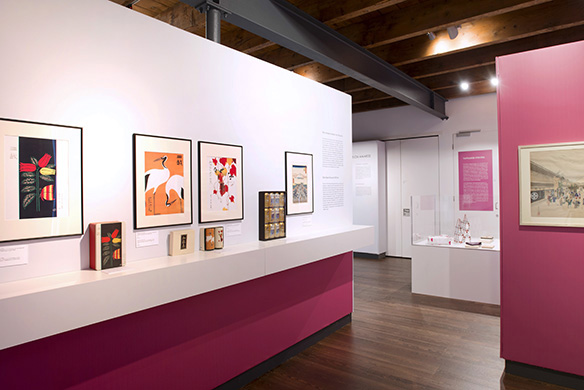Te Mooi om Weg te Gooien: Verpakkingsdesign uit Japan

PROJECT
Productverpakkingen vormen een fascinerend onderdeel van de Japanse consumptiecultuur. Hedendaagse technologieën en marketingstrategieën bepalen grotendeels hun vorm. Het ontwerp is vaak geïnspireerd op decoratieve motieven van kunstobjecten uit het verleden. De esthetiek van verpakkingen wordt ook sterk beïnvloed door Japanse tradities rondom het verpakken van geschenken. Te mooi om weg te gooien: Verpakkingsdesign uit Japan laat zien hoe het heden en het verleden samenkomen in verpakkingsdesign.
De tentoonstelling toont drie thema’s: ‘Het artistieke Japan’, ‘De alchemie van alledag’ en ‘Verfraaide intenties’. ‘Het artistieke Japan’ laat Japanse objecten van negentiende-eeuwse verzamelaars zien die een inspiratiebron waren voor de opkomst van het Japonisme – een fascinatie met Japanse kunst, mode en design. Deze objecten spelen nog steeds een cruciale rol in de wereldwijde perceptie van Japanse materiële cultuur. Dit beeld gaat echter voorbij aan de sociaalhistorische en technologische veranderingen die de Japanse verpakkingsindustrie de afgelopen eeuw heeft doorgemaakt.
De introductie van buitenlandse technologieën, materialen en esthetische concepten heeft geleid tot een duizelingwekkende verscheidenheid aan ontwerpen. Deze worden getoond in ‘De alchemie van alledag’. De objecten zijn prijswinnende ontwerpen van een verpakkingsontwerpwedstrijd die een maal per twee jaar georganiseerd wordt door de ‘Japan Package Design Association’. Bij het laatste thema ‘Verfraaide intenties’ staat het Mitsukoshi-warenhuis – het meest toonaangevende warenhuis in Japan – en de Japanse kunst van het inpakken van cadeaus centraal. Geschenken vertegenwoordigen een belangrijke vorm van consumptie in Japan en zijn bijzonder belangrijk voor de omzet van warenhuizen. De praktijk van het inpakken van geschenken bouwt voort op de traditie van het verpakken van kostbare voorwerpen, maar in de hedendaagse consumptiemaatschappij is het vooral een manier om de intentie van de gever te benadrukken.
De tentoonstelling is ook in Krakau, Polen te zien geweest, van 10 november 2016 tot en met 26 februari 2017. Kijk op deze website voor meer informatie (Pools).
Zie de catalogus van de tentoonstelling hier.
DOEL
De meeste publicaties over verpakkingsdesign in Japan suggereren dat er een ononderbroken continuïteit bestaat tussen de premoderne Japanse artistieke tradities en hedendaagse ontwerpen. De tentoonstelling Te mooi om weg te gooien: Verpakkingsdesign uit Japan plaats kritische kanttekeningen bij deze mythe. De gastcuratoren – dr. Ewa Machotka en prof. dr. Katarzyna J. Cwiertka, beiden verbonden aan de Universiteit Leiden – tonen aan hoe dit beeld ontstaan is en waarom het in stand blijft
PARTNERS
LeidenAsiaCentre, NWO, Astellas B.V. JPDA, Mitsukoshi, Manggha Museum of Japanese Art and Technology, Leiden Stad van Ontdekkingen
PROJECTDUUR
Locatie Japanmuseum SieboldHuis Leiden: 10 juni – 28 augustus Locatie Manggha Museum voor Japanse kunst en technologie, Krakau: 9 november – 28 februari 2016.[:en]
PROJECT
Product packaging forms a fascinating part of Japan’s consumer culture. Whereas modern-day technologies and marketing strategies often determine their form, the design is frequently inspired by decorative motifs such as those found on art objects from the past. The aesthetics of packaging is also strongly influenced by Japanese traditions of gift-wrapping. Too pretty to throw away: Packaging Design from Japan illustrates through museum objects, consumer items and gift wrappings, how past and present are united in packaging design.
The exhibition is structured around three themes: 1) “Artistic Japan”; 2) “The Alchemy of the Everyday”; and 3) “Embellished Intentions.” “Artistic Japan” shows the objects accumulated by nineteenth-century collectors of Japanese material culture, which provided an inspiration for the rise of the phenomenon of Japonism, a fascination with things Japanese. These objects continue to play a pivotal role in the global perception of Japan’s material culture today.
However, this perception overlooks significant socio-historical and technological transformations that the packaging conventions underwent in Japan during the last hundred years. The introduction of foreign technologies and materials has resulted in dazzling diversity of designs presented in the following theme of “The Alchemy of the Everyday”. The objects on display are selected from the award-winning entries to the biennial packaging design competition held by the Japan Package Design Association. Finally, we enter the world of “Embellished Intentions” represented by the gift-packaging practices of the Mitsukoshi Department Store, one of the most exclusive establishments in the country. Gifts represent a major form of consumption in Japan and are of particular importance for the revenues of the department stores. The Japanese practice of gift wrapping builds on the tradition of wrapping precious objects, but in the contemporary context its primary function is to emphasize the intention behind the gift. You can find more information about the exhibition on the website of the SieboldHuis.
The exhibition has also been to Krakow, Poland, from November 10, 2016 until February 26, 2017. For more information visit the website (Polish).
See the catalogue of the exhibition here.
GOAL
Most publications on packaging design in Japan suggest that there is an uninterrupted continuity between pre-modern Japanese artistic traditions and contemporary designs. The exhibition Too Pretty to Throw Away: Packaging Design from Japan questions this assumption. Through the displays, the guest curators – Dr. Ewa Machotka and Prof. Dr. Katarzyna J. Cwiertka, both from Leiden University – show how this image has arisen and why it persists.
PARTNERS
LeidenAsiaCentre, NWO, Astellas B.V., JPDA, Mitsukoshi, Manggha Museum of Japanese Art and Technology, Leiden Stad van Ontdekkingen.
PROJECT DURATION
Location Japanmuseum SieboldHuis Leiden: 10 June – 28 August 2016. Location Manggha Museum of Japanese Art and Technology, Krakau: November 9 2016 – February 28 2017.[:]


